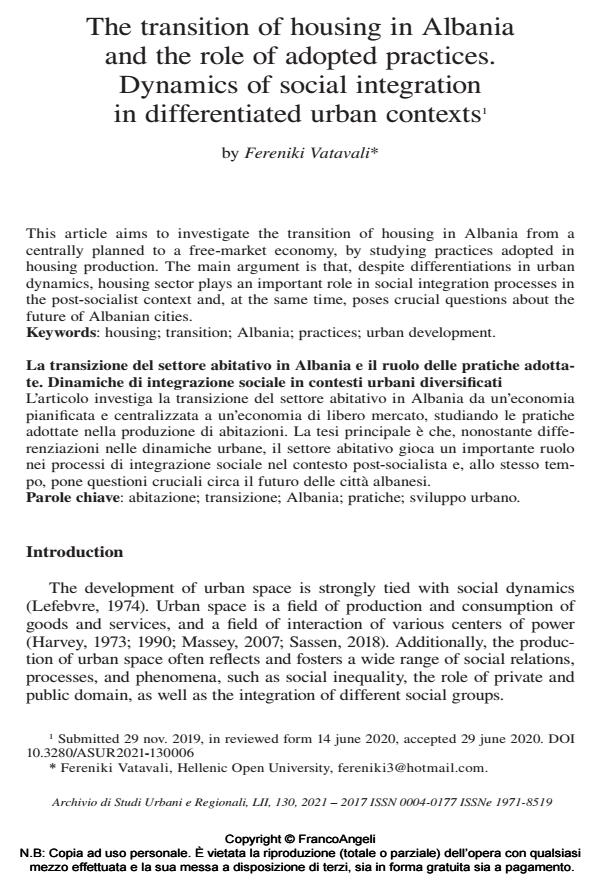The transition of housing in Albania and the role of adopted practices. Dynamics of social integration in differentiated urban contexts
Titolo Rivista ARCHIVIO DI STUDI URBANI E REGIONALI
Autori/Curatori Fereniki Vatavali
Anno di pubblicazione 2021 Fascicolo 2021/130
Lingua Inglese Numero pagine 18 P. 100-117 Dimensione file 141 KB
DOI 10.3280/ASUR2021-130006
Il DOI è il codice a barre della proprietà intellettuale: per saperne di più
clicca qui
Qui sotto puoi vedere in anteprima la prima pagina di questo articolo.
Se questo articolo ti interessa, lo puoi acquistare (e scaricare in formato pdf) seguendo le facili indicazioni per acquistare il download credit. Acquista Download Credits per scaricare questo Articolo in formato PDF

FrancoAngeli è membro della Publishers International Linking Association, Inc (PILA)associazione indipendente e non profit per facilitare (attraverso i servizi tecnologici implementati da CrossRef.org) l’accesso degli studiosi ai contenuti digitali nelle pubblicazioni professionali e scientifiche
This article aims to investigate the transition of housing in Albania from a centrally planned to a free-market economy, by studying practices adopted in housing production. The main argument is that, despite differentiations in urban dynamics, housing sector plays an important role in social integration processes in the post-socialist context and, at the same time, poses crucial questions about the future of Albanian cities.
L’articolo investiga la transizione del settore abitativo in Albania da un’economia pianifi-cata e centralizzata a un’economia di libero mercato, studiando le pratiche adottate nella produzione di abitazioni. La tesi principale è che, nonostante differenziazioni nelle dinami-che urbane, il settore abitativo gioca un importante ruolo nei processi di integrazione socia-le nel contesto post-socialista e, allo stesso tempo, pone questioni cruciali circa il futuro del-le città albanesi.
Parole chiave:Abitazione; transizione; Albania; pratiche; sviluppo urbano.
Fereniki Vatavali, The transition of housing in Albania and the role of adopted practices. Dynamics of social integration in differentiated urban contexts in "ARCHIVIO DI STUDI URBANI E REGIONALI" 130/2021, pp 100-117, DOI: 10.3280/ASUR2021-130006